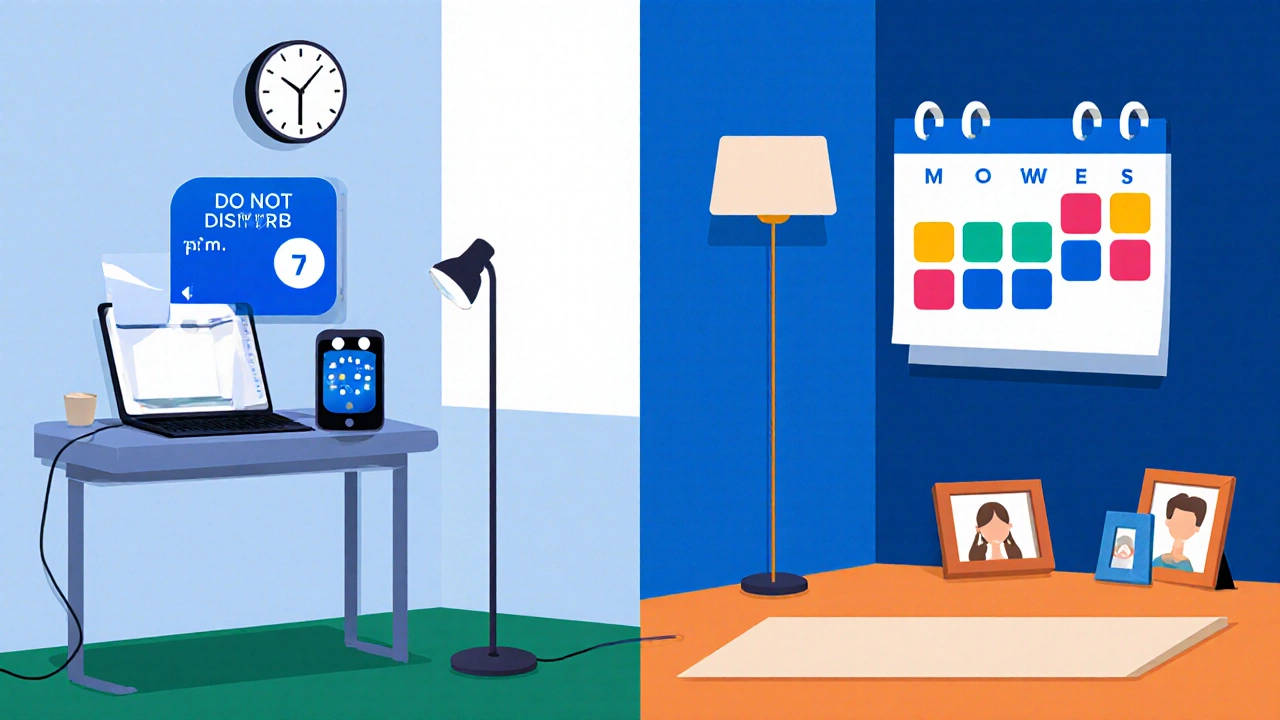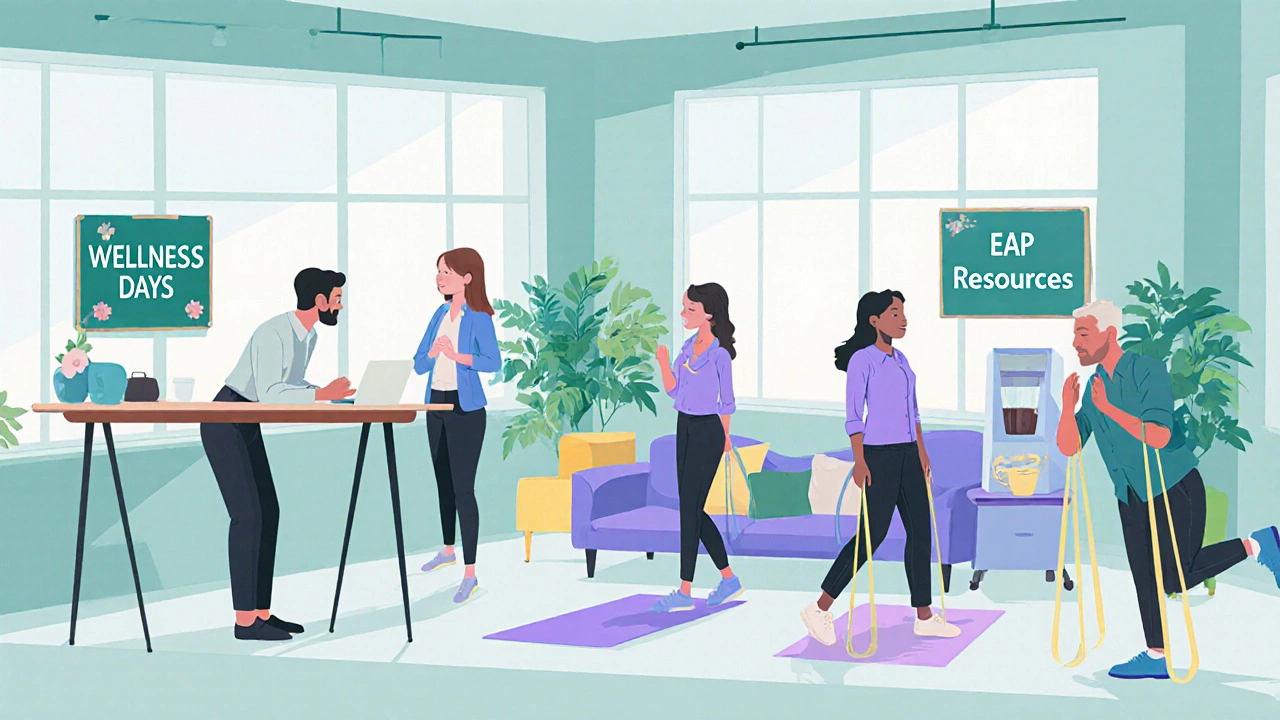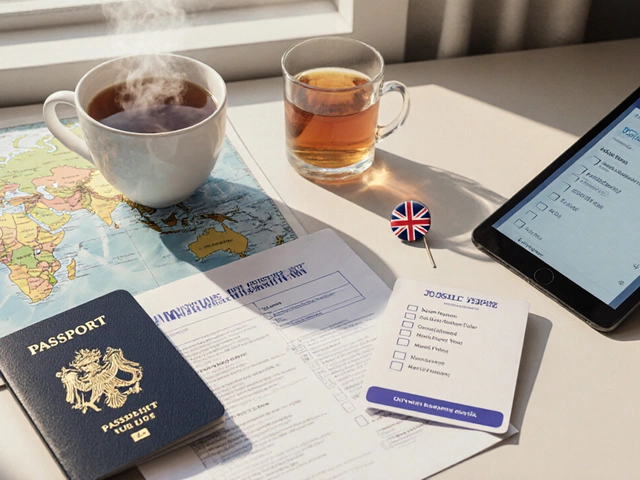Flexible Work Options Calculator
Find Your Ideal Work Arrangement
Answer these questions to discover which flexible work model best suits your situation.
Feeling like you’re constantly juggling meetings, emails, and family duties? You’re not alone. Many employees struggle to keep the scales even, and the cost of an unbalanced life shows up as fatigue, missed deadlines, and even health problems. Below you’ll find a straight‑forward roadmap that helps you turn the chaos into a sustainable rhythm.
What Work-life balance means the ability to manage professional responsibilities while preserving personal well‑being and fulfillment really looks like
At its core, work‑life balance isn’t about a perfect 50/50 split. It’s a dynamic equilibrium that shifts with project deadlines, family events, and personal energy levels. When the balance is right, you feel productive at work, present at home, and have room for hobbies or self‑care.
Step 1: Take a Reality Check
Before you can improve anything, you need a baseline. Grab a notebook and answer these quick prompts for a typical week:
- How many hours do you actually spend working (including overtime and answering messages after hours)?
- Which activities drain you the most?
- When do you feel most energized?
- What personal commitments keep you grounded?
Tip: Use a time‑tracking app such as Toggl or Clockify to get objective data. Seeing the numbers on screen often sparks the first ‘aha’ moment.
Step 2: Set Crystal‑Clear Boundaries
Boundaries are the guardrails that prevent work from spilling over into personal time. Here are three practical types:
- Digital boundaries: Turn off non‑urgent notifications after 7 p.m. and set your status to “Do Not Disturb” on Slack or Teams.
- Physical boundaries: If you work from home, designate a specific room or desk as your “work zone.” When you step away, you’re mentally switching off.
- Time boundaries: Block out non‑negotiable personal slots (family dinner, gym, hobby) in your calendar and treat them like any other meeting.

Step 3: Master Time Management with Proven Techniques
Two methods stand out for busy professionals:
- Time blocking allocates fixed chunks of time for specific tasks, reducing context‑switching - schedule deep‑work periods in the morning, admin tasks after lunch, and a 15‑minute wrap‑up at day‑end.
- Pomodoro Technique breaks work into 25‑minute focused sprints followed by short breaks - helps maintain concentration and forces regular mental rests.
Combine both: block a Pomodoro‑friendly window, then repeat as needed.
Step 4: Leverage Flexible Work Arrangements
Many companies now offer options that let you shape the day. Below is a quick comparison of three popular models.
| Option | Core Benefits | Potential Drawbacks | Best For |
|---|---|---|---|
| Flextime | Choose start/end times; keeps team overlap. | May still require core‑hour attendance. | Parents needing school‑run flexibility. |
| Remote work | Eliminates commute; can work from anywhere. | Risk of isolation; home‑office setup needed. | Roles that rely on output rather than presence. |
| Compressed workweek | Four 10‑hour days give a three‑day weekend. | Longer daily fatigue; coverage gaps. | Project‑based teams with clear deliverables. |
Ask your manager which model aligns with your role and personal rhythm. Even a hybrid (2 days remote + 3 days office) can shave hours off your weekly stress budget.

Step 5: Prioritize Physical and Mental Health
Health isn’t a luxury; it’s the engine that powers productivity. Two habits fit easily into a busy schedule:
- Mindfulness short, intentional breathing or meditation exercises that reset stress levels - try a 5‑minute guided session before each major meeting.
- Micro‑exercise: stand, stretch, or do a quick body‑weight circuit during break‑time. A 10‑minute walk after lunch can boost afternoon focus by up to 30% (Harvard Business Review, 2023).
Step 6: Build a Supportive Workplace Culture
Individual tactics work best when the organization backs them up. Look for or advocate for these programs:
- Employee Assistance Program (EAP) offers confidential counseling, legal advice, and financial coaching - a free resource many forget to use.
- Manager check‑ins focused on workload rather than just deliverables.
- Wellness days or mental‑health Fridays that give teams a breather during high‑stress periods.
When leadership models balance (e.g., leaving on time, taking vacation), the whole team follows suit.
Quick Checklist for Everyday Balance
- ☐ Review weekly time‑tracking data every Friday.
- ☐ Block at least one “no‑meeting” deep‑work window each day.
- ☐ Set a nightly “shutdown” alarm to end work‑related notifications.
- ☐ Schedule regular micro‑breaks (5 min every hour).
- ☐ Reserve two personal activities per week that are non‑negotiable.
- ☐ Talk to your manager about trying a flexible arrangement if you haven’t already.
Check these boxes consistently, and you’ll notice stress levels dip, focus sharpen, and personal satisfaction rise.
How can I negotiate flexible hours without seeming uncommitted?
Prepare data on your current output, propose a pilot period (e.g., 4 weeks), and outline how you’ll stay reachable during core hours. Emphasize how flexibility will boost your productivity and reduce burnout.
Is remote work compatible with strong team collaboration?
Yes, if you use clear communication tools, hold regular video check‑ins, and maintain shared documents. Setting expectations for response times and using video for complex discussions helps preserve cohesion.
What’s the best way to handle after‑hours emails?
Create a rule in your email client that postpones non‑urgent messages to the next morning. If an email truly needs immediate attention, it should be flagged as high priority; otherwise, let it wait.
How often should I practice mindfulness to see benefits?
Even 5 minutes a day, consistently, can lower cortisol levels. Aim for a short session before each major meeting or during a break, and gradually increase to 10-15 minutes if you enjoy it.
Can a compressed workweek lead to burnout?
It can if you don’t manage daily stamina. Pair the longer days with strict breaks, and make sure the three‑day weekend includes recovery activities, not just extra work.





